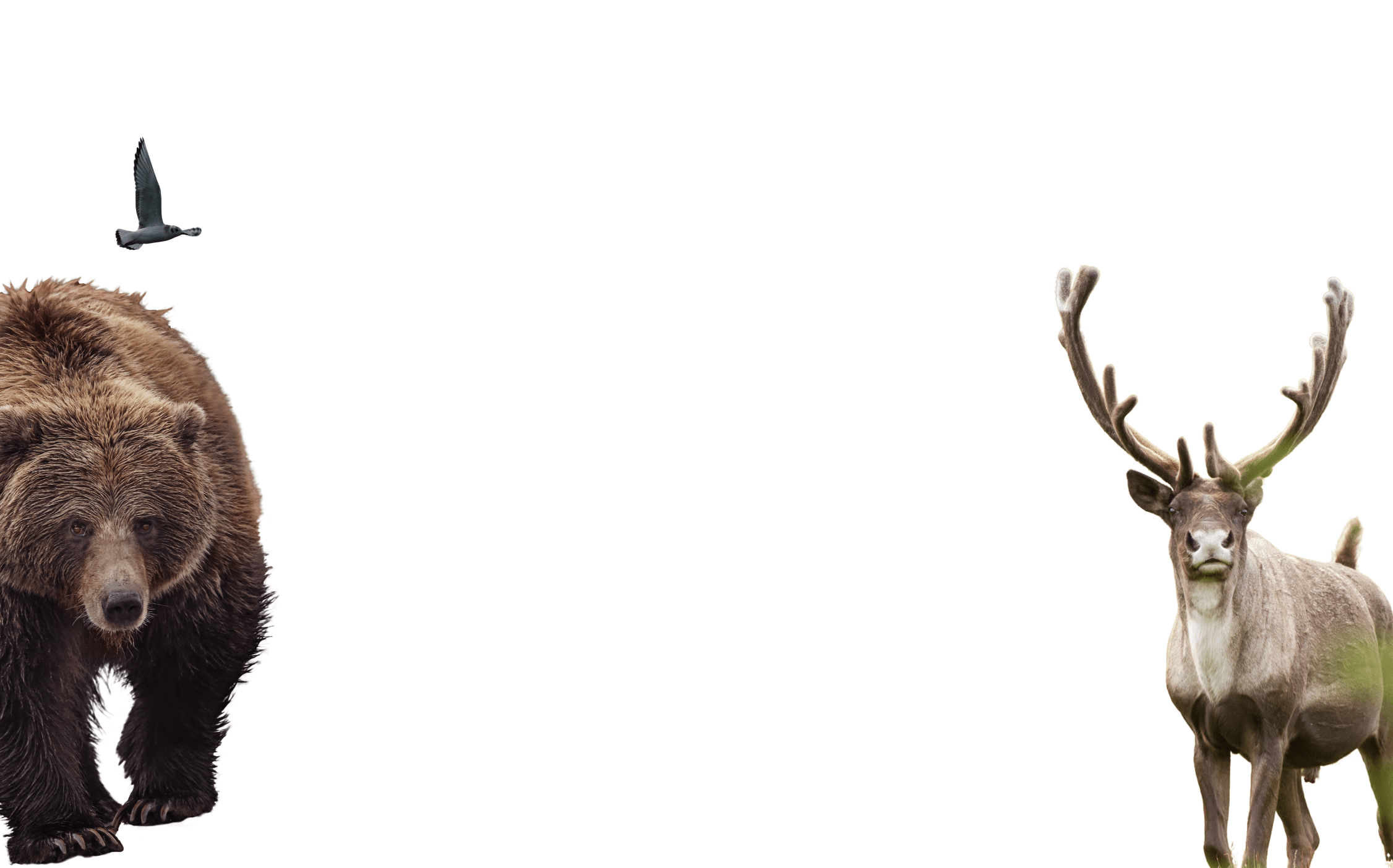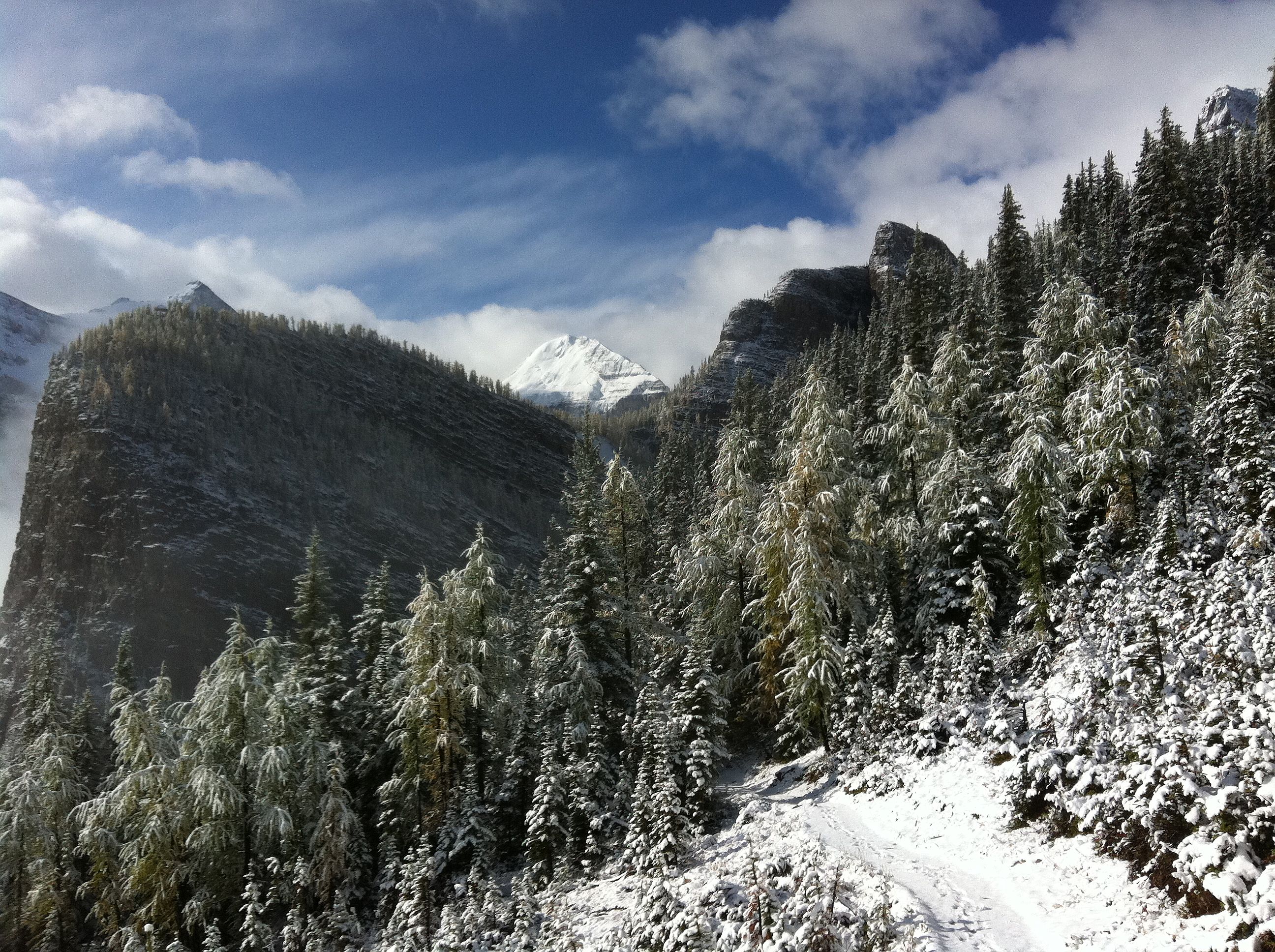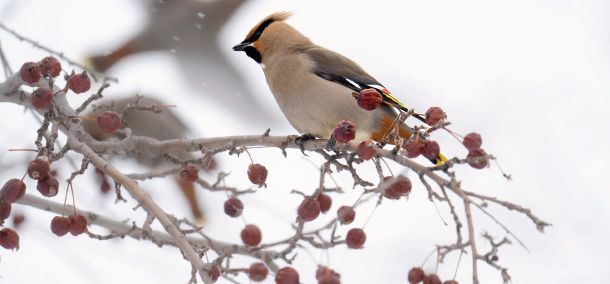
A Reminder to Embrace Environmental Joy
February 17, 2025
- •
- •
- •
It’s time to encourage and embrace environmental joy in Alberta.

Photo © C. Campbell
By Kennedy Halvorson
Read the PDF version here.
In my community, we have the concept of “queer joy.” It describes finding moments of happiness, acceptance, power, and celebration – just moments of love in spite of adversity, as a balm to oppression and as a reminder to hope. It can be an energizing sentiment for challenging times.
And, challenging times sometimes seem status-quo in environmental work. So, I’m borrowing the concept and proposing an antidote; it’s time to encourage and embrace environmental joy in Alberta. Far from an exhaustive list, here’s some of the good work that inspired my resolve this year.
Connection
Roads, railways, seismic lines, and other linear disturbances are extensive in Alberta, and come with serious environmental ramifications. As they criss-cross and fragment habitat, they confuse and expose wildlife, alter ecosystem interactions, and increase the likelihood of collisions. Structures that mitigate their impacts like overpasses and underpasses are one tool in conservation for restoring connectivity. These structures in Banff National Park have famously reduced collisions on the Trans Canada by 80 percent, facilitating on average over 9,000 safe wildlife crossings every year.
Already observed in use by eager elk and deer, the on Highway 1 represents the first wildlife overpass in Alberta constructed outside of a national park. This animal-friendly infrastructure helps to maintain a regionally important wildlife corridor, allowing grizzlies, wolves, cougars, and more to freely pass without risking their safety (and ours) traversing the highway. It’s an important, long-sought achievement;
“It took 10 years to convince Alberta that a wildlife overpass east of Canmore was the right investment. That overpass wasn’t even complete before they announced they’d be building a handful more. Taking something alien, making it possible, and then making it normal is how big ideas become everyday operations, and we’re seeing that with wildlife crossing infrastructure in Alberta right now.” – Adam Linnard, Landscape Program Manager with the Yellowstone to Yukon Initiative
As a part of the , Albertans can expect to see more overpasses, underpasses, and associated wildlife exclusion fencing, concentrated in key areas throughout the province to provide safe passage for our furry friends. Especially important are three overpasses planned between Crowsnest Pass and Burmis along Highway 3, that will create safe routes across what has previously been a massive and deadly barrier for wildlife movement, both locally and within the larger Yellowstone to Yukon corridor. As Adam puts it, this infrastructure is “advancing the dream of strong, interconnected animal populations at the big scale – the continental scale – that they need.”

Photo by J. Hildebrand
Investigation
Underappreciated and lacking protections, it has been heartening to hear pollinators will be the focus of multiple long-term monitoring efforts across the province. While they’re better off in terms of interest and resources than most other invertebrates, pollinators still have a long way to go in captivating the public interest and capturing hearts the way bears or caribou do. Conservation is made trickier considering key metrics like population abundance, distribution, even presence are harder to determine when it’s an animal the size of one, two, maybe three peas.
Funding from Environment and Climate Change Canada was earmarked this year to facilitate surveys, restore habitat, and raise awareness for Alberta’s at-risk bee’s species. Over the next five years the Oldman Watershed Council and Alberta Native Bee Council will be working on various projects across the province to help conserve the gypsy cuckoo bumble bee, the yellow-banded bumble bee, the western bumble bee, Suckley’s cuckoo bumble bee, and the macropis cuckoo bee.
These efforts will join that of the Métis Nation of Alberta (MNA), which is midway through a similar monitoring project to determine the presence, plant preferences, and nesting habitat of bee species at their Indigenous Protected and Conserved Area (IPCA) east of Edmonton. In the seven surveys the MNA has completed to date, they have confirmed the presence of two bumble bee species at risk, which will help inform the IPCA’s management plan to ensure these important pollinators remain on the landscape. It is my hope that these will provide sufficient data and evidence to support the legislated protection of pollinators, who are foundational to our ecosystems.
Protection
Canada has committed to 30 by 30, a global initiative that encourages each country to conserve 30 percent of their land and waters by 2030. This effort was undertaken to combat biodiversity loss, mitigate climate change, and ensure the stability of ecosystem services – and while scientists recommend larger commitments, any ecosystem receiving greater protections is a start.
At the beginning of 2024, Alberta had conserved just over 15 percent of its land mass. Just under half of this is protected through provincial measures, with the majority conserved on federal lands like national parks. Existing protected areas are not ecologically representative of the province’s biodiversity, with the Grasslands, Foothills, and Parklands Natural Regions still severely under-conserved.
This year, Alberta added 14 square kilometres to its provincial park system with the establishment of Kleskun Hills Provincial Park and La Biche River Provincial Recreation Area, and the expansion of Lois Hole Centennial Provincial Park, and Bleriot Ferry and Peaceful Valley Provincial Recreation Areas. The establishment of Kleskun Hills northeast of Grande Prairie, the largest of these new parks, will help protect rare and important native grasslands found within its boundaries, increasing the percent of Parkland conserved in the province by 0.1 percent.
Private land conservation is increasingly becoming an important tool to fill government gaps, particularly in natural regions where crown land is limited. For instance, while the government protects just under 1,300 square kilometres within the grasslands, through direct purchases and conservation easements, by 2022 land trusts had facilitated the conservation of an additional 771 square kilometres.
This year, organizations like the Nature Conservancy of Canada have continued to add to the total area conserved, particularly in these under-protected regions. Their ambitious and commendable Prairie Grassland Action Plan aims to protect 5,000 square kilometres of native grasslands across the country by 2030, and they’ve closed in on that goal in 2024. Another 50 square kilometres was conserved in Alberta by the environmental non-profit, concentrated largely in Southern Alberta. Here’s hoping for their continued success, especially in places like Sagebrush Flats, which would secure the protection of critical habitat for the precipitously endangered greater sage-grouse.
Restoration
The re-establishment of plains bison back into their natural ranges is a long-term goal for many, including AWA. Their absence on the landscape has been sorely felt by both the animal species and human communities who rely on them. The widespread return of plains bison would be restorative, as their interactions with the landscape help create ideal habitat conditions for other prairie species like the burrowing owl, swift fox, and pronghorn antelope. It would also reflect an act of real reconciliation and demonstrate that settler governments are committed to more than just words.
From an environmental perspective, the Banff herd is a promising start. The 16 bison originally translocated from Elk Island National Park have grown to almost 140 strong. Resilient, hardy, and adaptive, our resident bison afficionado told me the only limit to their continued success is human boundaries.
“From everything I’ve learned, bison are well-suited to the North American landscape. The question isn’t whether they will survive, it’s where are we going to let them return?” – Ruiping Luo, Conservation Specialist at Alberta Wilderness Association
The Banff population will be restricted within the national park unless the provincial and federal governments can agree to some form of transboundary management that permits their range to expand onto provincial lands. In the meantime, their numbers will continue to grow to the thresholds permitted by Parks Canada, and in that, another opportunity for joy is found. This year marks the first time in more than a century and a half that Indigenous Nations have been able to hunt bison on their traditional territories within the boundaries of Banff. It is an achievement in itself that the herd is robust enough to sustain a hunt. Culturally and ceremonially, any bison harvested during the hunt represents an important step in supporting Indigenous stewardship and sovereignty on the land.
Resistance
I want to be clear; environmental joy is not acquiescence.
Making space for these moments of environmental joy only reveals more progress yet to be made – it makes plain that these little victories must continue to build to something bigger. It is not enough to restore connectivity for species on either side of Highways 1 or 3; we need safe, sufficient, and protected wildlife corridors for all species within the province. Reintroducing bison to Banff National Park is a single step of restoring the ecological network; now we must ask, where else are bison still missing? What other species are still absent? And why stop at expanding data and knowledge on at-risk bee species, what about all the insects, all species we rely on? Plus, what’s the point of monitoring if we don’t implement actions to restore populations and prevent declines in the first place? Sure, plenty of new public and privately protected areas are great. Onto the next 100,000-plus square kilometres.
Environmental joy, much like queer joy, is at its core an act of resistance. It’s a refusal to allow ignorance, indifference, or brutality absolute rule. It is making the active effort to resist becoming jaded or complacent to how things are by choosing to reflect on what has changed. It’s a recognition of the need to stop, acknowledge, and celebrate hard-won battles. It’s a commitment to keep fighting.
And it’s hard – choosing joy is hard. Which makes it all the more important, all the more necessary. It’s a choice I believe we need to make more than ever.
